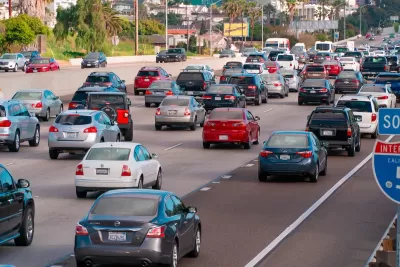Despite abundant research showing that roadway expansions provide limited congestion relief and increase long-term traffic problems, they still occur due to wishful thinking: advocates claim that “this” project is different.

“Why traffic never gets better,” by David Edmondson is a good discussion of induced vehicle traffic (the additional vehicle travel that results when roadways are expanded), and therefore the futility of using roadway expansions to reduce traffic congestion. “Congestion always wins,” he concludes.

The Fundamental Law of Traffic Congestion states that unpriced roads will always remain congested due to the phenomenon of induced demand. Induced demand is caused by people driving more, additional truck traffic, additional migration, and people switching onto the widened road. These are all economically beneficial, but the benefits of road widening are because congestion returns to the same level, not because congestion is mitigated.
Roadway widening still occurs because of wishful thinking: either that “this” project will be different, or that the short-term benefits will be worthwhile. Matthew Turner, one of the authors of the 2009 study, put it succinctly in a New York Times story last year.
“If you keep adding lanes because you want to reduce traffic congestion, you have to be really determined not to learn from history,” Turner said.
FULL STORY: Why traffic never gets better

Trump Administration Could Effectively End Housing Voucher Program
Federal officials are eyeing major cuts to the Section 8 program that helps millions of low-income households pay rent.

Planetizen Federal Action Tracker
A weekly monitor of how Trump’s orders and actions are impacting planners and planning in America.

The 120 Year Old Tiny Home Villages That Sheltered San Francisco’s Earthquake Refugees
More than a century ago, San Francisco mobilized to house thousands of residents displaced by the 1906 earthquake. Could their strategy offer a model for the present?

HSR Reaches Key Settlement in Northern California City
The state’s high-speed rail authority reached an agreement with Millbrae, a key city on the train’s proposed route to San Francisco.

Washington State Legislature Passes Parking Reform Bill
A bill that would limit parking requirements for new developments is headed to the governor’s desk.

Missouri Law Would Ban Protections for Housing Voucher Users
A state law seeks to overturn source-of-income discrimination bans passed by several Missouri cities.
Urban Design for Planners 1: Software Tools
This six-course series explores essential urban design concepts using open source software and equips planners with the tools they need to participate fully in the urban design process.
Planning for Universal Design
Learn the tools for implementing Universal Design in planning regulations.
Ada County Highway District
Clanton & Associates, Inc.
Jessamine County Fiscal Court
Institute for Housing and Urban Development Studies (IHS)
City of Grandview
Harvard GSD Executive Education
Toledo-Lucas County Plan Commissions
Salt Lake City
NYU Wagner Graduate School of Public Service





























